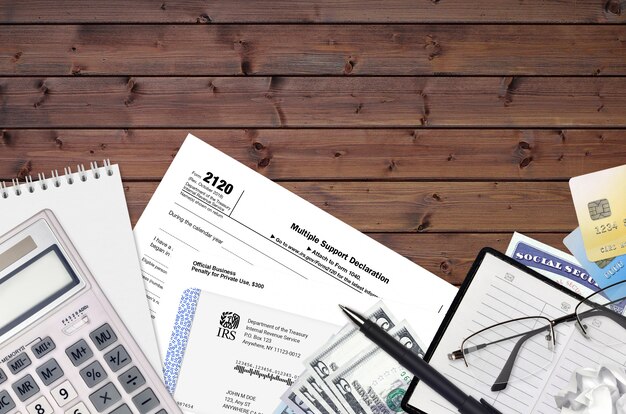Australia offers a wealth of opportunities for businesses looking to advance their research and development activities, particularly through R&D tax credits. These tax incentives are designed to encourage companies to invest in innovative projects and technological advancements by providing significant financial benefits.
Understanding how to apply for R&D tax credits in Australia can be a game-changer for businesses aiming to enhance their competitive edge while managing costs effectively.
In this guide, we will explore the various tax benefits for research and development available to Australian businesses and provide insights into the application process to help you navigate these opportunities with confidence.
Whether you’re a startup or an established enterprise, these incentives can play a crucial role in your growth strategy.

R&D tax credits are a crucial component of Australia’s innovation ecosystem. This section will explore the fundamentals of these credits, their significance for Australian businesses, and the key benefits they offer.
Definition and Purpose
R&D tax credits in Australia are designed to encourage companies to invest in research and development activities. These credits provide financial incentives for businesses that undertake innovative projects.
The primary purpose of R&D tax credits is to stimulate economic growth through technological advancement and scientific progress. By offsetting the costs associated with R&D, the Australian government aims to foster a culture of innovation across various industries.
These credits typically come in the form of tax offsets, which can significantly reduce a company’s tax liability. This allows businesses to reinvest savings into further research and development activities, creating a cycle of innovation.
Importance for Australian Businesses
R&D tax credits play a vital role in the growth and competitiveness of Australian businesses. They provide financial support for companies looking to innovate and stay ahead in their respective markets.
For small and medium-sized enterprises (SMEs), these credits can be particularly impactful. They often make the difference between being able to pursue cutting-edge research or having to shelve potentially groundbreaking projects due to budget constraints.
Large corporations also benefit from R&D tax credits, as they can offset the substantial costs associated with maintaining research departments and funding long-term development projects. This support helps keep Australia competitive on the global stage.
Key Benefits and Savings
The benefits of R&D tax credits extend beyond immediate financial savings. They can have a profound impact on a company’s overall growth and market position.
Financial Benefits:
-
Tax offsets that directly reduce tax liability
-
Potential for cash refunds for companies in a tax loss position
-
Ability to carry forward unused offset amounts to future income years
Strategic Advantages:
-
Increased capacity for innovation and product development
-
Enhanced ability to attract and retain top talent in research fields
-
Improved competitiveness in both domestic and international markets
Long-term Impact:
-
Contribution to Australia’s knowledge economy
-
Potential for creating new industries and job opportunities
-
Fostering collaborations between businesses and research institutions
Eligibility Criteria
Understanding the eligibility criteria for R&D tax credits is crucial for Australian businesses. This section outlines the qualifying activities, eligible industries, and addresses common misconceptions about the program.
Qualifying Activities and Expenses
R&D tax credits in Australia are available for specific types of research and development activities. These activities must meet certain criteria to be considered eligible for the tax incentive.
Qualifying activities typically involve systematic, investigative, and experimental work. They should aim to acquire new knowledge or create new or improved materials, products, devices, processes, or services.
Eligible expenses may include:
-
Salaries and wages for researchers and support staff
-
Cost of materials used in R&D activities
-
Depreciation of assets used for R&D purposes
-
Contracted R&D services from approved providers
It’s important to note that routine product testing, quality control, and market research do not typically qualify as R&D activities under this program.
Eligible Industries and Sectors
R&D tax credits in Australia are not limited to specific industries. Any company engaged in eligible R&D activities can potentially benefit from these incentives, regardless of their sector.
While these sectors are common claimants, innovative companies in any industry can potentially qualify for R&D tax credits if their activities meet the eligibility criteria.
Common Misconceptions
There are several misconceptions about R&D tax credits that can prevent eligible companies from claiming these valuable incentives.
One common myth is that R&D activities must result in a successful outcome to qualify. In reality, the focus is on the process of systematic experimentation, not the end result. Even “failed” experiments can qualify if they contribute to the overall knowledge base.
Another misconception is that only large companies with dedicated research departments can claim these credits. In fact, small and medium-sized enterprises often benefit significantly from R&D tax incentives.
Some businesses also believe that their activities are too routine to qualif as R&D. However, many day-to-day problem-solving activities can potentially meet the criteria if they involve systematic experimentation and seek to resolve scientific or technological uncertainties.
Application Process
Navigating the application process for R&D tax credits in Australia requires careful preparation and attention to detail. This section will guide you through the essential steps, from documentation to submission, and address common challenges.
Preparing Essential Documentation
Proper documentation is crucial when applying for R&D tax credits in Australia. It forms the backbone of your claim and helps demonstrate the eligibility of your activities.
Key documents to prepare include:
-
Detailed project plans outlining your R&D activities
-
Records of experiments conducted, including methodologies and results
-
Financial records showing R&D-related expenditures
-
Timesheets for staff involved in R&D activities
-
Contracts with external researchers or service providers
It’s advisable to maintain a contemporaneous record-keeping system throughout the year. This approach ensures that all relevant information is captured accurately and in real-time, strengthening your claim.
Submission Steps and Deadlines
The process of submitting an R&D tax credit claim in Australia involves several key steps:
-
Register your R&D activities with AusIndustry within 10 months of the end of your company’s income year.
-
Complete the R&D Tax Incentive Schedule as part of your company tax return.
-
Submit your company tax return to the Australian Taxation Office (ATO).
It’s crucial to adhere to these deadlines, as late submissions may result in the rejection of your claim. The exact due date for your tax return will depend on your company’s specific circumstances and tax agent status.
Remember that the R&D activities must be registered before you can claim the tax offset. Planning ahead and starting the process early can help ensure a smooth submission.
Common Challenges and Solutions
Many businesses face challenges when applying for R&D tax credits. Being aware of these issues and their solutions can help streamline your application process.
Challenge: Identifying eligible activities
Solution: Review the ATO’s guidelines carefully and consult with R&D tax specialists to ensure your activities meet the criteria.
Challenge: Inadequate documentation
Solution: Implement robust record-keeping systems from the start of your R&D projects. Consider using specialized software to track R&D activities and expenses.
Challenge: Misunderstanding technical requirements
Solution: Attend workshops or webinars offered by AusIndustry to gain a better understanding of the program’s technical aspects.
Challenge: Balancing compliance with business operations
Solution: Integrate R&D tax credit considerations into your regular business planning and project management processes.
Maximizing R&D Incentives
To fully leverage R&D tax credits in Australia, businesses need to adopt a strategic approach. This section explores how to optimize your R&D activities, work with tax professionals, and continuously improve your claims.
Strategic Planning for R&D Projects
Effective planning is key to maximizing the benefits of R&D tax credits. By aligning your research activities with the eligibility criteria, you can increase your chances of a successful claim.
Consider the following strategies:
-
Clearly define your R&D objectives and how they align with the program’s criteria
-
Structure your projects to clearly demonstrate systematic progression and experimentation
-
Involve key personnel from both technical and financial departments in planning R&D activities
-
Regularly review and adjust your R&D strategy to ensure ongoing alignment with business goals and tax credit eligibility
Remember, the goal is not just to claim credits, but to foster genuine innovation that drives your business forward while complying with the program’s requirements.
Engaging with Tax Professionals
Partnering with experienced tax professionals can significantly enhance your R&D tax credit strategy. These experts can provide valuable insights and ensure compliance with complex regulations.
Benefits of working with R&D tax specialists include:
-
In-depth knowledge of current legislation and ATO guidelines
-
Assistance in identifying eligible activities you might have overlooked
-
Guidance on proper documentation and record-keeping practices
-
Support during ATO audits or reviews of your R&D claims
When selecting a tax professional, look for those with specific experience in R&D tax credits and a track record of successful claims in your industry.
Continuous Monitoring and Evaluation
The landscape of R&D tax credits is continually evolving. Regular monitoring and evaluation of your R&D activities and claims process can help you stay ahead of changes and optimize your benefits.
Key aspects to focus on include:
-
Regularly reviewing your R&D activities against the latest eligibility criteria
-
Analyzing the success rate of your claims and identifying areas for improvement
-
Keeping abreast of changes in legislation or ATO guidelines that may affect your claims
-
Gathering feedback from team members involved in R&D activities to refine your processes
By adopting a culture of continuous improvement in your R&D tax credit strategy, you can ensure that you’re maximizing your benefits year after year.
Future of R&D Tax Credits in Australia
The landscape of R&D tax credits in Australia is dynamic, with ongoing changes and emerging trends. This section examines recent updates, future predictions, and potential growth opportunities for businesses leveraging these incentives.
Recent Changes and Updates
The Australian government regularly reviews and adjusts the R&D tax incentive program to ensure it remains effective and aligned with national innovation goals.
Recent changes include:
-
Adjustments to the R&D expenditure threshold and offset rates
-
Introduction of more stringent eligibility criteria to prevent misuse
-
Enhanced focus on collaboration between businesses and research institutions
These updates aim to target the incentives more effectively and encourage genuine innovation across various sectors of the Australian economy.
It’s crucial for businesses to stay informed about these changes and adjust their R&D strategies accordingly to maintain compliance and maximize benefits.
Predictions and Trends
Looking ahead, several trends are likely to shape the future of R&D tax credits in Australia:
-
Increased focus on sustainability and clean technology research
-
Greater emphasis on digital innovation and Industry 4.0 technologies
-
Enhanced support for collaboration between businesses and universities
-
Potential introduction of more targeted incentives for specific high-priority sectors
Businesses should consider aligning their R&D activities with these emerging trends to potentially increase their eligibility for future incentives.
It’s also likely that the application and audit processes will become more streamlined through the use of advanced data analytics and AI technologies.
Opportunities for Growth
The evolving landscape of R&D tax credits presents numerous opportunities for Australian businesses to grow and innovate.
By strategically leveraging these incentives, companies can:
-
Accelerate their innovation cycles and bring new products to market faster
-
Explore cutting-edge technologies without bearing the full financial risk
-
Attract top talent by demonstrating a commitment to research and innovation
-
Position themselves as industry leaders in emerging fields
To capitalize on these opportunities, businesses should:
-
Regularly reassess their R&D strategies in light of changing incentives
-
Explore partnerships with research institutions and other innovative companies
-
Invest in upskilling their workforce to tackle new technological challenges
-
Stay informed about global R&D trends and how they might apply to the Australian context
By embracing these opportunities, Australian businesses can not only benefit from tax incentives but also drive meaningful innovation that contributes to the country’s economic growth and global competitiveness.




